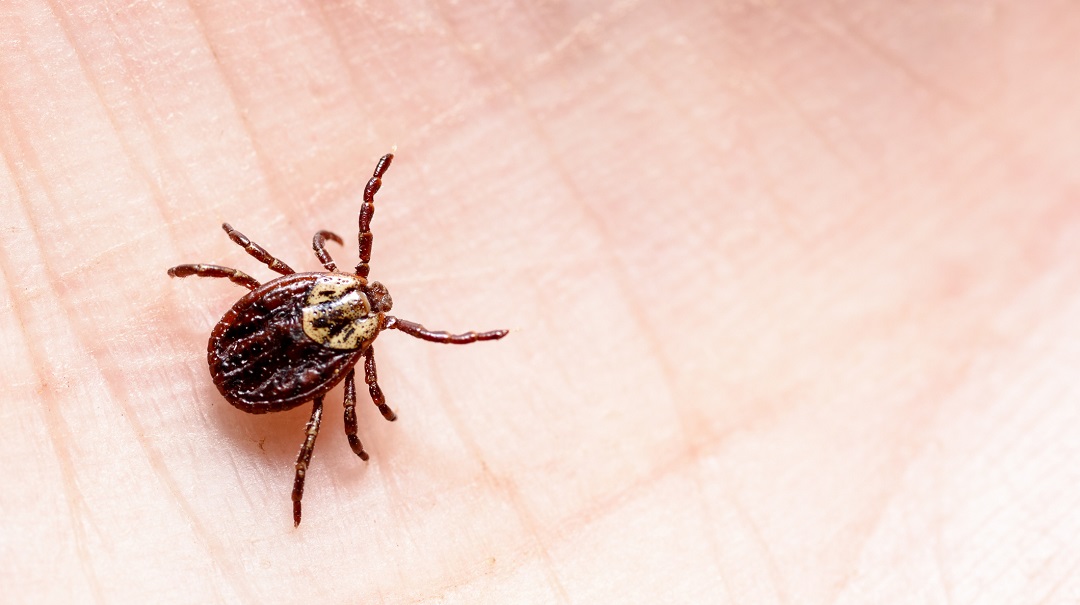As you head outside, it’s important to know the facts about Powassan virus and how to protect yourself against this serious tick-borne disease. While Powassan virus (POW) is still rare, the Centers for Disease Control and Prevention (CDC) reports growing numbers of infections with the virus in the eastern and Great Lakes regions of the United States.
First discovered in Powassan, Ontario, Canada, in 1958, POW virus is most common in the late spring, early summer, and mid-fall when ticks are most active. Warmer winters have also led to a rising tick population, which increases the risk of tick-borne diseases, including POW virus.
Related reading: 2017’s growing tick problem: How to protect yourself
What Is Powassan Virus?
POW virus is one of a group of arthropod-borne viruses or arboviruses—the same family responsible for mosquito-borne West Nile virus—that can cause encephalitis, an inflammation of the brain. Like Lyme disease, a more common tick-borne virus, patients contract POW virus through the bite of an infected tick. It is not transmitted directly from person to person.
POW virus can be spread by a variety of ticks, including the deer tick, though it’s important to know that not every tick is infected with the virus and not everyone who is bitten by a tick will get sick. But ticks that are infected with POW virus can spread the virus quickly—in as little as 15 minutes—compared to ticks with Lyme disease, which can take up to 24 or 48 hours to spread Lyme disease.
Symptoms of Powassan Virus
The symptoms of POW virus can vary. Some people infected with the virus will only have mild symptoms, while others can become seriously ill. In a few cases, people have died after becoming infected with POW virus.
The incubation period for POW virus, or the time between a tick bite and the onset of symptoms, is typically around one week to a month. The virus can impact the central nervous system, causing encephalitis (swelling of the brain) and meningitis (inflammation of the membranes that surround the brain and spinal cord).
Other common symptoms of POW virus include:
- Confusion
- Fever
- Headache
- Loss of coordination
- Vomiting
- Weakness
- Seizures
- Speech difficulties
About half of those individuals that contract POW virus will have permanent symptoms, including recurring headaches, muscle wasting, and memory problems. In about 10 percent of cases, an infected individual will not recover and will die from complications of POW virus.
Diagnosis and Treatment for Powassan Virus
Because POW virus is still rare, it can be difficult for healthcare providers to diagnose it. If a doctor suspects that a patient has POW virus, a diagnosis depends on a combination of signs and symptoms along with lab tests of the blood or spinal fluid. These tests detect antibodies the immune system make to fight the virus.
While there is no cure or specific medicine to treat POW virus, severe cases of POW virus typically require hospitalization. In the hospital, patients may receive breathing support, intravenous or IV fluids, and drugs to reduce the swelling around the brain and spinal cord.
How to Prevent Powassan Virus
Anyone who spends time outdoors is at risk of contracting tick-borne diseases like POW virus, although the elderly and those with weakened immune systems are at the highest risk of experiencing the most serious symptoms.
The best way to reduce your risk of POW virus is to prevent a tick bite.
- Wear protective clothing, including long pants with socks pulled up over them and a long-sleeved shirt. Light-colored clothing makes it easier to see ticks.
- Use insect repellant with DEET when visiting wooded areas or places where you’ll be walking through tall grass. Follow the repellant label for instructions on how to apply it to the skin.
- Perform a tick check on yourself and your pets after spending time outdoors. You may also want to consider taking a bath or shower to wash off any ticks. It’s important to remove ticks before they have a chance to bite and attach to the skin.
- Remove ticks carefully from the body using tweezers. Watch that area of the skin in the following days for any unusual signs, including redness or swelling. If you suspect that you have a tick bite, consult your doctor.
While POW virus can be serious, it’s important to remember this tick-borne disease is still rare. By taking some simple preventive steps, you can protect yourself from POW virus and enjoy the outdoors.
Cases of tick-borne #Powassanvirus are rising in the eastern U.S. Preventing #tickbites is the best defense. Find out how to protect yourself. https://bit.ly/307wwUS via @MedStarWHC
Click to Tweet

